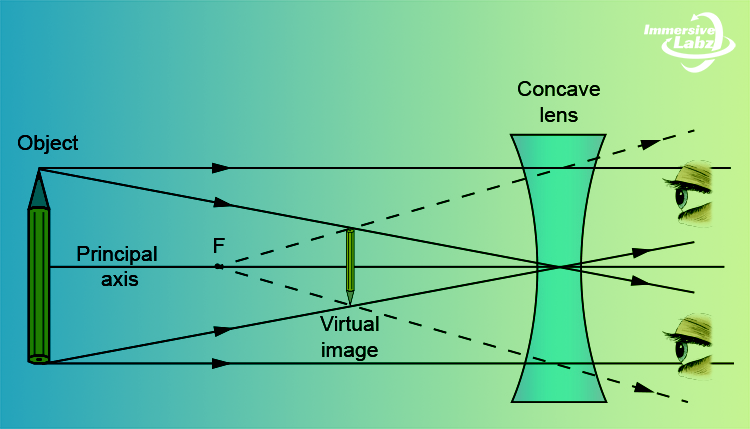Physics Practicals Class 12
Focal Length of Concave Lens Using Convex Lens
- Perform science experiments at your fingertips
- Learn anytime and from anywhere
- 3D gamified way of advanced learning
- Boost your academic score
- Accessible through Mobile, Laptop, Desktop, and Tablet
- Gain a competitive edge in IIT and NEET exams
About Simulation
- The simulation will give an entire idea about image formation through the combination of concave and convex lenses and the focal length of concave lens of physics practicals class 12.
- You will learn why a convex lens is being used to get an image from a concave lens.
- You will use the knowledge of the reflection of light through lenses, mirrors, and learn to apply the lens formula.
- All the concave lens experiment steps and procedures like measuring focal lengths, viewing images through lenses, noting down the readings, etc., and many more are highly interactive and have been simulated in a very similar manner as you do in a physics lab.

- This interaction provides a very immersive environment and gives you a real-lab-like experience while conducting or performing experiments.
- This will help learners to better prepare for various competitive exams such as IIT-JEE (JEE Main & Advanced), NEET, and Olympiads.
Simulation Details




Description
Lenses are divided broadly into two types: convex and concave. Lenses that are thicker at their centers than at their edges are convex, while those that are thicker around their edges are concave. A light beam passing through a convex lens is focused by the lens on a point on the other side of the lens.
This point is called the focal point. In the case of concave lenses, which diverge light beams, the focal point lies in front of the lens and is the point on the axis of the incoming light from which the spread light beam through the lens appears to originate.
It is clear that the image formed by a concave lens is always virtual and erect. Therefore, its focal length cannot be determined directly. However, it can be determined indirectly by introducing a convex lens in between the object and the concave lens and producing a real image.

The real image (𝐼1) formed by the convex lens will act as the virtual object for the concave lens. When concave lens is interposed between the convex lens and the real image 𝐼1, the new real image is formed at 𝐼2. If 𝑢 is the distance of the concave lens from the virtual object 𝐼1 and 𝑣 is the distance of the concave lens from the real image 𝐼2, then the focal length of the given concave lens is,
$$\frac{1}{f}=\frac{1}{v}-\frac{1}{u}$$
Requirements for this Science Experiment
⦁ Optical Bench ⦁ Concave Lens ⦁ Convex Lens ⦁ Lens Holder ⦁ Uprights ⦁ Optical Needles
Why Choose SimuLab for Science Practicals?

Image Gallery
Try SimuLab
A 3D virtual science lab (physics lab, chemistry lab, and biology lab) that helps students learn science experiments easily.















